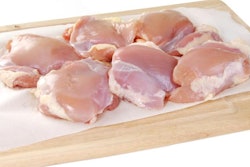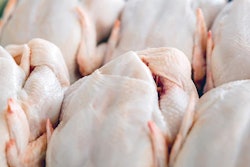
Following a devastating drought last year, South Africa is forecast to resume its role as a leading corn producer for the region.
From corn importer to exporter
Extreme drought in the region in the 2015-16 marketing year (MY), starting May 1, 2016 and concluding April 30, 2017, pushed South Africa from a leading exporter of corn to an importer, according to the USDA Foreign Agricultural Service (FAS). However, a record-breaking corn harvest of 16 million tons is forecast for MY2016-17 in the agency’s latest GAIN report. That is more than double the drought-hit harvest of just 7.8 million tons, and will allow the country to export around 2 to 2.5 million tons of corn over the next two marketing years.
South Africa’s corn production is split between the commercial and subsistence sectors, and also between white corn, which is mainly for direct human consumption, and yellow corn destined primarily for animal feed. FAS estimates that the commercial corn harvest will amount to almost 16.0 million tons in MY2016-17, and that the subsistence crop will add a further 730,000 tons. For yellow corn, the estimated harvests in that period are 6.46 million and 267,000 tons for the two sectors, respectively.
Commercial demand for corn as animal feed has increased at an annual rate of around three percent over the last two decades but a number of challenges in the sector look likely to lead to a deceleration in this growth to 5.2 to 5.3 million tons in MY2016-17 and MY2017-18. According to FAS, South Africa’s economic growth is expected to continue to be sluggish, held back by structural and policy constraints.
South African poultry sector faces challenges
One year ago, the prospects for the poultry industry in South Africa seemed to be poor and deteriorating. Feed costs were high, the national economy was weak, and imported poultry meat posed strong competition to domestic producers. While feed costs have lowered lately, there is little sign of an easing in the other drivers, and highly pathogenic avian influenza (HPAI) has recently hit the country.
Increasing imports of poultry meat, particularly from the European Union (EU), are being blamed in South Africa for the decline in the domestic poultry sector. This week, an article in Business Day has called on the South African government to take action against what it describes as “dumping” of “huge volumes” of chicken leg quarters by the EU. The South African Poultry Association (SAPA) has undertaken to launch action against EU countries that it alleges are behind the unfair trade.
HPAI first hit the South African commercial poultry sector in June of this year. Since then, the country’s animal health agency has reported 13 confirmed outbreaks to the World Organisation for Animal Health (OIE). The H5N8 variant of the virus has been detected at both backyard and commercial enterprises, and in the provinces of Gauteng and Mpumalanga.

















